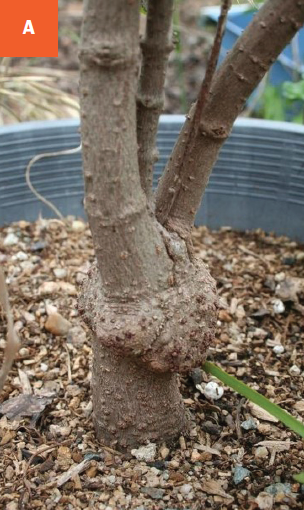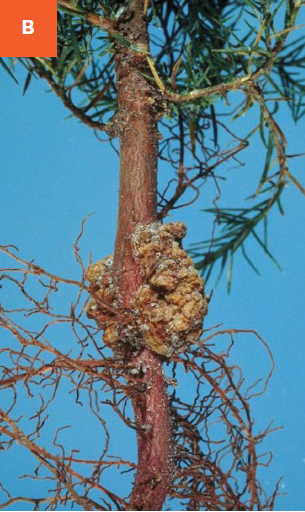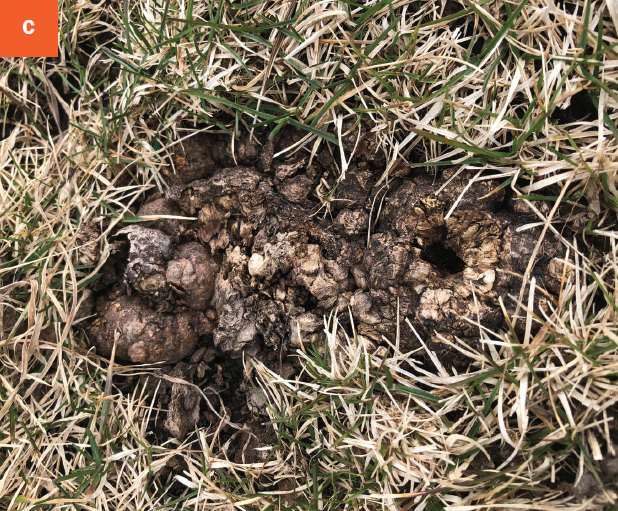Crown Gall
Agrobacterium tumefaciens (bacterium)
HOST Affects a wide variety of woody plants; often on poplar
DAMAGE/SYMPTOMS Soft, spherical, white to cream colored galls form at the base of stems/trunks, root crown, or on roots. Young galls can be mistaken as callus tissue. As galls mature, their shape becomes irregular and they turn brown or black. The tissue can be sponge-like or woody. The size of the galls increases with the growth of affected trees. Infected plants may appear stunted and express a lack of vigor due to water stress caused by a diseased root system.
DISEASE CYCLE Crown gall bacteria are common soil inhabitants. They survive free-living in soils with good aeration and on the root surface of weeds. The bacteria enter plants through fresh wounds inflicted by cultural practices like grafting or mowing or by natural causes (wind, hail). They then stimulate the host cells to grow rapidly and irregularly, resulting in formation of galls.
MANAGEMENT There is no cure for crown gall infection. Remove young plants that are infected to minimize spread of the disease. Avoid any type of wounding during cultural practices. Consider raising the soil level above exposed tree roots to avoid spreading infection during mowing practices. Disinfect your tools with 70% ethyl alcohol or a standard household disinfectant spray after being in contact with crown galls.
A Crown gall developing on the main stem close to the base. B Young crown gall at the base of a young tree. C Mature crown gall in lawn on root of established aspen tree.



